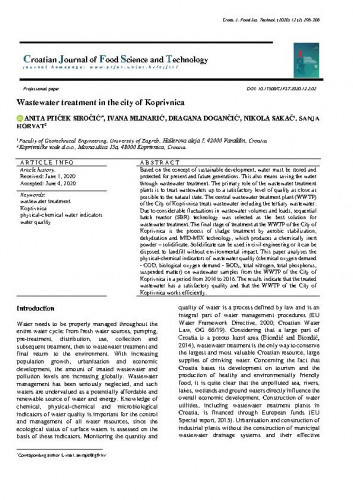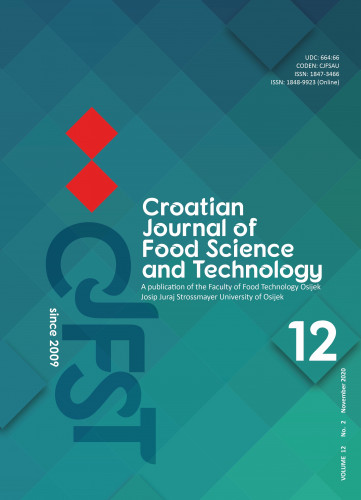Basedon the concept of sustainable development, water must be stored and protected for present and future generations. This also means saving the water through wastewater treatment. The primary role of the wastewater treatment plants is to treat wastewaters upto a satisfactory level of quality as close as possible to the natural state. The central wastewater treatment plant (WWTP) of the City of Koprivnica treats wastewater including the tertiary wastewater. Due to considerable fluctuations in wastewater volumes and loads, sequential batch reactor (SBR) technology was selected as the best solution for wastewater treatment. The final stage of treatment at the WWTP of the City of Koprivnica is the process of sludge treatment by aerobic stabilization, dehydration and MID-MIX technology, which produces a chemicallyinert powder –solidificate. Solidificate can be used in civil engineering or it can be disposed tolandfill without environmental impact. This paper analyses the physical-chemical indicators of wastewater quality (chemical oxygen demand -COD, biological oxygen demand -BOD5, total nitrogen, total phosphorus, suspended matter) on wastewater samples from the WWTP of the City of Koprivnica in a period from 2014 to 2016. The results indicate that the treatedwastewater has a satisfactory quality and that the WWTP of the City of Koprivnica works efficiently.
Sažetak

 Croatian journal of food science and technology : a publication of the Faculty of Food Technology Osijek : 12,2(2020) / editor-in-chief Jurislav Babić.
Croatian journal of food science and technology : a publication of the Faculty of Food Technology Osijek : 12,2(2020) / editor-in-chief Jurislav Babić.